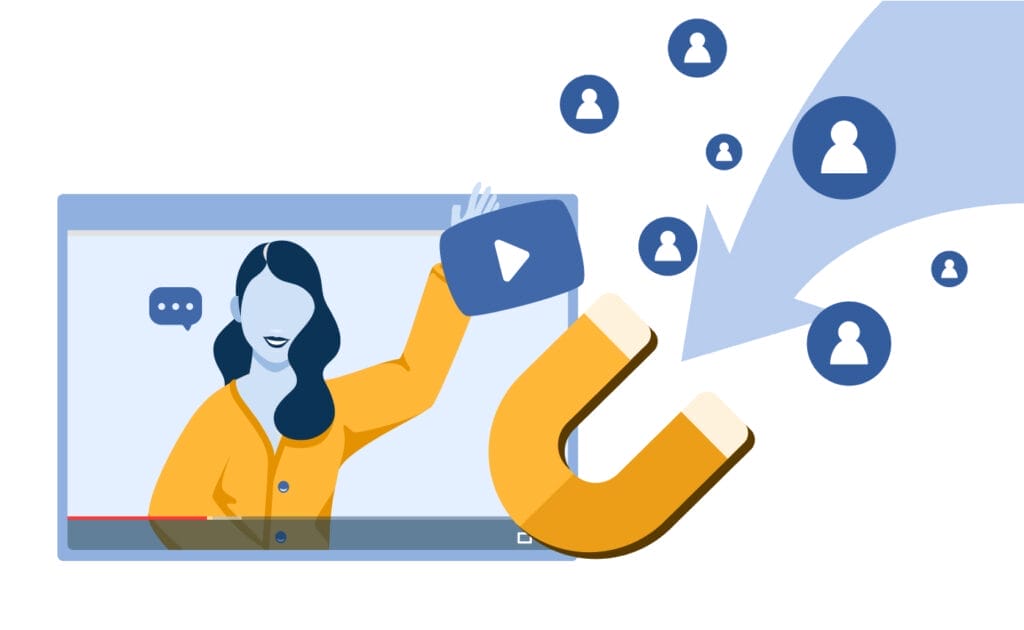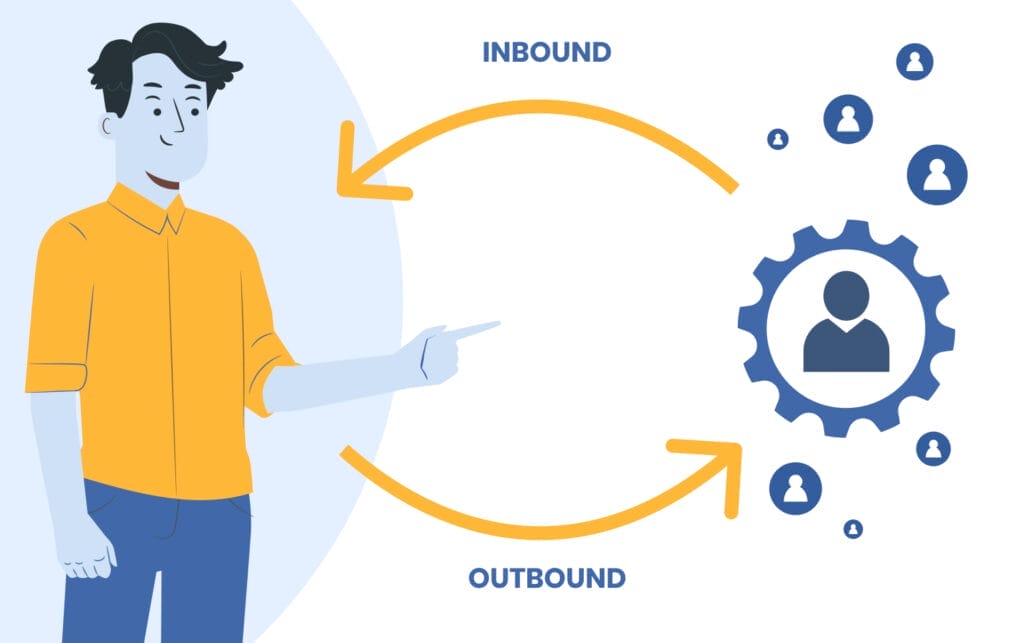In B2B sales, there are two ways to go about converting leads to sales: Inbound and Outbound tactics. Inbound sales attract prospects through valuable content, while outbound sales actively targets potential customers with direct outreach. Both have their own strengths, and each can help businesses craft a more effective and balanced sales strategy.

What is Inbound Sales?
Inbound sales is a customer-centric approach that attracts prospects by providing valuable content optimized for SEO and shared on social media. Unlike outbound methods, which rely on cold outreach, inbound sales pull leads in through educational content, guiding them through the sales funnel.
Key Tactics for Inbound Sales
At the heart of inbound sales lies a mix of strategic tactics designed to engage and nurture potential customers. Content marketing plays a critical role as businesses create high-quality blog posts, videos, whitepapers, and case studies to address common pain points and challenges faced by their target audience. Search engine optimization (SEO) further supports this by making sure these valuable resources are easily discoverable through organic search.
Lead nurturing with email campaigns is essential for maintaining ongoing engagement with prospects who may not be ready to make a purchasing decision right away. Automated and personalized email sequences allow companies to build relationships with leads over time, keeping the brand top-of-mind. Social media engagement is another key component of inbound sales, offering businesses a platform to share content, interact with potential customers, and build brand awareness.
Benefits of Inbound Sales
The biggest benefit of inbound sales is building trust and long-term relationships, leading to higher conversion rates. Since leads are warmer by the time they engage, conversion is easier. Inbound sales are also cost-effective, with less ongoing spending than outbound tactics.

What is Outbound Sales?
Outbound sales is a proactive, direct approach to sales where sales teams go out and make contact with potential customers. Instead of waiting for leads to come in, outbound sales involves cold calling, cold emailing and direct outreach to initiate contact with prospects. The goal is to find and engage with potential customers even if they haven’t interacted with the business before.
Effective Tactics for Outbound Sales
Outbound sales rely on cold calls and direct emails to make contact with prospects. Sales teams use these to introduce their product or service to people who fit their ideal customer profile (ICP) but aren’t actively looking for a solution. Paid advertising, such as search ads and social media campaigns, also plays a role in targeting potential customers based on specific criteria. Sales development representatives (SDRs) are the backbone of outbound sales, responsible for outreach, qualifying leads and setting appointments for sales teams.
Outbound Sales Benefits
One of the biggest advantages of outbound sales is the speed at which you can generate leads. By going out and making contact, sales teams can fill their pipelines and start engaging with prospects quickly. Outbound methods allow for direct targeting of ideal customer profiles so you’re reaching the right people. Outbound sales also give you immediate feedback as prospects respond in real time, and you can adjust your strategy and messaging on the fly.

Main Differences Between Inbound and Outbound Sales
When comparing inbound and outbound sales, it’s important to understand the differences between the methods, cost, and control over lead generation. Each has its own strengths that can be used depending on the business’s sales goals and target market.
Lead Generation
Inbound sales generate leads by attracting prospects through content, SEO, and social media. These leads find the business organically as they’re searching for solutions to their problems.
Outbound sales is a direct approach where sales teams reach out to potential customers through cold calls, emails and paid ads. Inbound sales attracts warm leads who have shown interest, outbound sales targets specific individuals who may not even know about the business’s offerings.
Cost
The cost structure of inbound and outbound sales is vastly different. Outbound sales involve higher upfront costs for paid ads, SDRs, and lead lists. Inbound sales require a long-term investment in content creation, SEO, and digital marketing tools.
Inbound may take longer to produce results but can become more cost-effective over time as content continues to generate leads without additional ad spend.
Sales Cycle
The sales cycle for inbound sales is longer as it’s driven by prospects who may be in the early stages of their buying journey. These leads are nurtured over time through educational content and ongoing engagement.
Outbound sales is shorter as it targets specific prospects and can move faster especially when addressing immediate needs or pain points.
Control Over Leads
Another big difference between inbound and outbound sales is the level of control over lead generation. Outbound sales give businesses more control as they can target specific ideal customer profiles (ICPs) through targeted outreach.
Inbound sales are effective but more passive, relying on prospects to find and engage with the business. This means outbound sales can direct who enters the pipeline, and inbound leads are those who interact with the content.
When to Use Each One
Inbound Sales Should Be Used When:
- Building long-term relationships with prospects is a priority.
- The goal is to attract warm leads through valuable content and organic traffic.
- Targeting a broader audience, allowing leads to come to you naturally.
- A more cost-effective, long-term strategy is needed.
- The sales process can be slower but with more nurtured, informed prospects.
Outbound Sales Should Be Used When:
- Immediate lead generation and quick conversions are essential.
- Entering new markets or targeting specific customer segments.
- You need greater control over prospect selection and outreach.
- Targeting high-value clients that may not find you through inbound efforts.
- A proactive approach is needed to directly engage decision-makers.
Find the Right Balance for Your Sales Strategy
Choosing between inbound and outbound sales depends on your business objectives, target audience, and resources. Inbound sales foster long-term relationships and draw in warmer leads, while outbound sales deliver faster results with greater control over prospect targeting. You can integrate both approaches if you choose, which can help you create a versatile sales strategy that maximizes opportunities and adapts to varying market demands.


